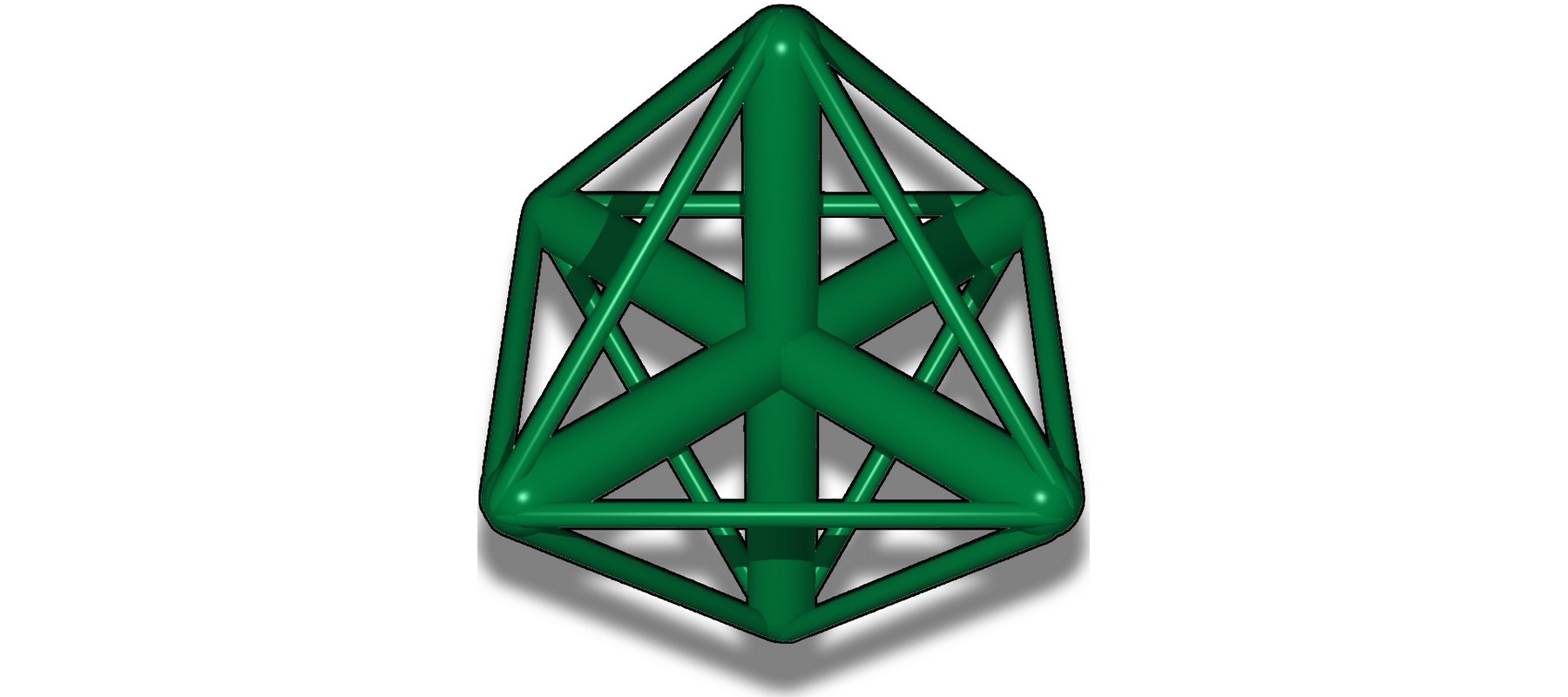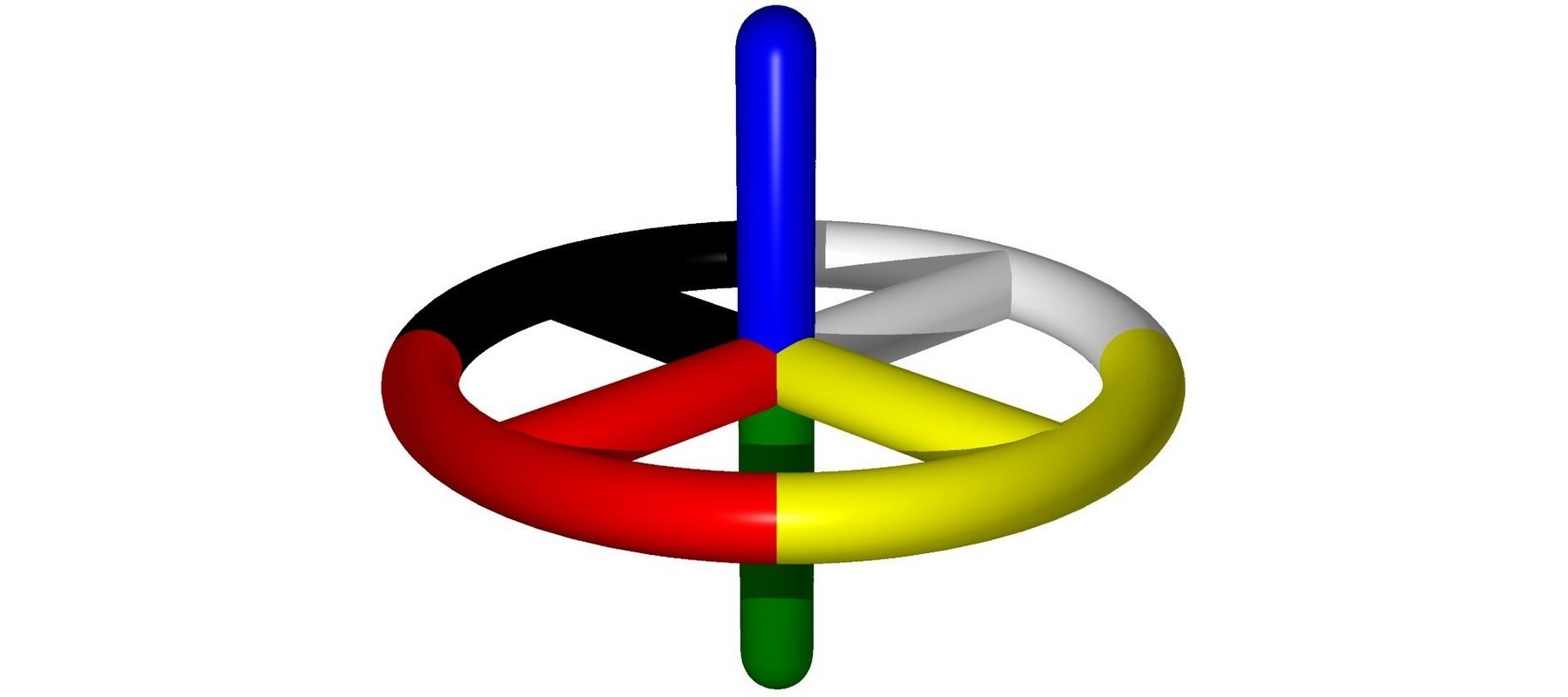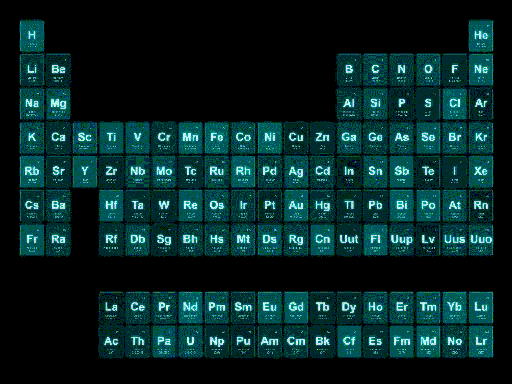The first question is: could the equations for Dimensions of Space be applied to mass?
Could the concept of Dimensions of Mass be conceived? The answer was obviously Yes! because the math has proven irrefutable.
The duality of mass matched the duality of space, and the First Unit was dual but twice as important in both Space and Mass, so it was 2/2 =1 in both Space and Mass.
The Dimensions of Space and Mass can be put in the same terms.
The First and Second Dimensions of Space and Mass are:
2(d^p)/2p and (d^p)/2p for Space and
2(m^p)/2p and (m^p)/2p for Mass.
These both follow the general form: 2(x^p)/2p and (x^p)/2p.
This is the foundation of the Byrdwell Model for Dimensions (BMD).
The Byrdwell Model for DImensions next incorporates the concept of Deconstraction that was at the heart of The Pi Paradox.
Radius, r, is the first deconstruction of diamter, d, as follows:
d = (d/1)
r = (d / (1+1)) = d / 2
In The Pi Paradox, it is shown that one symbol for pi has two different meanings based on the two different units, r and d. Radius, r = (d/(1+1)) is the first increment in the denominator of d = (d/1), thus, radius is the first decrement, or deconstruction, of diamter.
If we increment the denominator of the Dimension of Mass equation, it is (m^p)/(2p+1), called a Deconstruction of Mass.
from scientic conferenes, meetings, and presentations of the material.
The First Dimension is two, All Dimensions are dual, and a unit increment in the denominator is a decrement, or deconstruction.
The power in the numerator is the Element Number. The Sum in denominator is mass.
Power in numerator is Element Number. Sum in denominator is mass.
Power in numerator is Element Number. Sum in denominator is mass.
The First Increment in the denominator is the First Decrement, or Deconstruction.
The First One is two, All are dual, The First Increment in the denominator is the First Decrement, or Deconstruction.
The First Two Dimensions of Mass, then three Deconstructions sequential, then Three Dimensions of Mass sequential.
Two Dimensions, three Deconstructions sequential, Three Dimensions, then alternating Dimensions & Unit Deconstructions & First Deeper Deconstruction.
The Dimension Model of Mass (DMM) allows new patterns to be seen.
Argon is the First Anomaly and First Deeper Deconstruction and pattern for other Deeper Decnstructions. Nickel is the next Anomaly, being light. Other Anomalies are heavy.
The First Mass, Hydrogen is close to (PI/3)^(1/6), which can be expressed as (PI/3)^(2(d1^p3/2p)^p1)/2p1
Space and Mass follow the same pattern, 2(x^p)/2p for the First Dimension, (x^p)/2p for the other Dimensions. This pattern is the start of the Byrdwell Model for Dimensions (BMD).
The Dimensions of Space and Mass are put in the same terms.
The First and Second Dimensions of Mass are:
Hydrogen = 2(m^p)/2p
and Helium = (m^p)/2p
All are based on a unit mass, m=1, where m is a unit proton mass.
There are exactly Ten (10) Dimensions of Mass in the Periodic Table.
A Deconstruction by One (1) is a Unit Deconstruction.
There are Nine (9) Unit Deconstructions, (m^p)/(2p+1).
The ten (10) Dimensions of Mass and nine (9) Unit Deconstructions make up 19 of the first 20 Elements of the Periodic Table.
The Periodic Table of Elements shows the First Two Dimensions of Mass [2(m^p)/2p, (m^p)/2p], Hydrogen and Helium, then three (3) Deconstructions [(m^p)/(2p+1)], Lithium, Li, Beryllium, Be, and Boron, B.
Three Deconstructions in a row occur only once, between the Second and Third Dimensions of Mass. The first three Deconstructions preview the three p-orbitals that follow at the sixth Element, Carbon, the Third Dimension of Mass.
After the First Two Dimensions of Mass are
The First Three Deconstructions. These appear to set the pattern for the three p-orbitals that immediately follow.
Three Dimensions in a row follow the First Three Deconstructions:
The Third Dimension of Mass is Carbon, Element #6.
The Fourth Dimension of Mass is Nitrogen, Element #7.
The Fifth DImension of Mass is Oxygen, Element #8.
Thus, the pattern for the first eight (8) Elements is:
Two Dimensions of Mass
Three Unit Deconstructions
Three Dimensions of Mass
After the pattern above, the pattern changes to five (5) alternating Deconstructions then Dimensions in pairs of Elements. These five Deconstructions seem to preview the five "p" orbitals that follow.
The Element Alternating Deconstructions are:
Fluorine, F-9, is a Unit Deconstruction,
Neon, Ne-10, is the Sixth Dimension of Mass.
Sodium, Na-11, is a Unit Deconstruction,
Magnesium, Mg-12, is the Seventh Dimension of Mass.
Aluminum, Al-13, is a Unit Deconstruction,
Silicon, Si-14, is the Eighth Dimension of Mass.
Phosphorus, P-15, is a Unit Deconstruction,
Sulphur, S-16, is the Ninth Dimension of Mass.
Chlorine, Cl-17, is the fifth alternating Deconstruction.
The next Element, #18, Argon, is the First Anomaly in the Periodic Table.
Argon, Element #18, is the First Anomaly in the Periodic Table.
Argon-18 follows the form (m^p)/(2p+2x), where p=18 and x=1.
This form represents the core of the form of equation that gives deeper Deconstructions. The form can be written as (m^p)/(2p+2x+0), where p=18 and x=1.
Potassium, K-19, is the ninth and last Unit Deconstruction.
Calcium, Ca-20, Element #20, is the Tenth (10) and last Dimension.
The last Dimension is the last of the 10 Dimensions, and it occurs as the 20th Element, which is the last Element before metals begin.
All Elements above Element #20 are Deconstructions of the Tenth (and final) Dimension of Mass.
After ELement 20, the metals start. Metals are characterized by the five "d" orbitals that fill up to 2 electrons per orbital.
Metals follow two equations, for odd or even masses:
Even: (m^p)/(2p+2x+0), x=1,2,3,...
Odd: (m^p)/(2p+2x+1), x=1,2,3,...
These can be summarized as (m^p)/(2p+2x+0/1), where "0/1" means "0 or 1". All Elements follow this general form, with 19 of the first 20 Elements having x=0.
When "f" orbitals are considered, including radioactive Elements, the General Form of Dimensions of Mass becomes:
(m^p)/(2p+2x+2y+0/1).
Elements up to Element #20, except Element #17, Chlorine, have x=0,y=0.
Element #17 and Elements from Element #21 to Element #56 have x=1,2,3,..., y=0.
Elements from #57 and above have x=1,2,3... and y=1,2,3...
The Dimensions Model of Mass (DMM) shows 10 Dimensions of Mass.
Never before have the Anomalies been explained. This also explains "Magic Nucleii".
The First Two Dimensions, Three Deconstructions, Three Dimensions = 5 Dimensions, 3 Deconstructions
This Contains all Ten (10) Dimensions and all Nine (9) Unit Deconstructions and one Higher Deconstruction.



This site was created with the Nicepage

